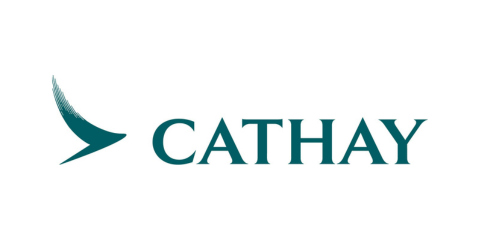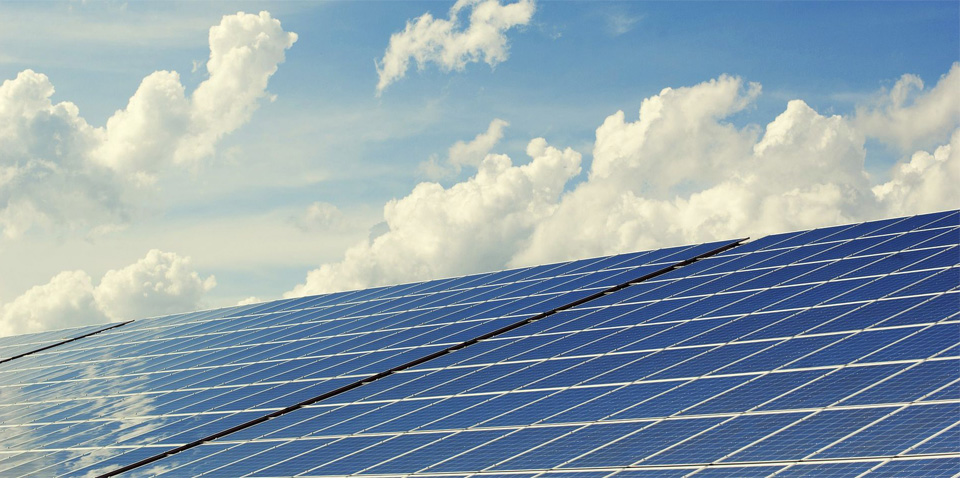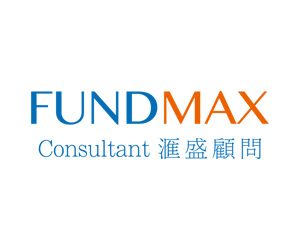Want to be in the loop?
subscribe to
our notification
Business News
SOCIAL AND ECONOMIC SITUATION IN 9 MONTHS OF 2015
The sector of agriculture, forestry and fishery rose 2.08%; the sector of industry and construction rose 9.57%; the sector of service rose 6.17%. Of the agricultural, forestry and fishery sector, the forestry achieved a highest growth of 7.89%; the fishery increased by 2.11%; the agriculture by 1.77%.
Of the industry and construction, the industry climbed by 9.69%, of which the manufacturing reached a high increase of 10.15%[1]; the mining and quarrying rose 8.15%. The construction in nine months rose 9.00%.
Of the service sector, the wholesale and retail; repair of consumer articles grew by 8.4%; the accommodation and catering service by 3.83%; the finance, banking and insurance by 6.7%; the real estate business by 2.9%.
About the structure of economy in nine months of this year, the agriculture, forestry and fishery accounted 16.30%; the industry and construction accounted for 33.09%; the service represented 40.52%; product taxes less subsidies on production took 10.09%.
In terms of GDP to use in nine months, the final consumption rose 9.07% against the identical period in 2014; gross capital formation went up by 8.08%; trade balance (goods and services) made the general growth reduce 3.43 percentage points.
+ Gross Domestic Products in 9 months of 2015
Agriculture
As of mid-September, the country cultivated 1721.2 thousand hectares of winter rice, equaling 96.7% from the same period last year. If the weather is favorable in ending months of the year and pestilent insect is controlled well, the productivity of winter rice this year over the country would reach an estimate of 4930kg per hectare, up 30 – 50kg per hectare; the winter rice yield would achieve 9.6 million tons, down 71.2 thousand tons compared to that in 2014’s same crop.
As of 15 September 2015, provinces in the South harvested 1736.1 thousand hectares of summer-autumn rice, equaling 96.5% against the last year’s same period and accounted for 82.6% of cultivated area. The country’s summer-autumn rice area this year was estimated to reach 2.1 million hectares, reduced by 7.5 thousand hectares from the same crop in 2014; the productivity gained 5400kg per hectare, up 80kg per hectare; the yield obtained 11.3 million tons, up 122 thousand tons. Estimated autumn-winter rice area cultivated in 2015 achieved 671.1 thousand hectares; the productivity was equivalent to that in the last year’s same crop; the yield reached nearly 3.5 million tons, rose about 248 thousand tons.
The rice production in 2015 was estimated at 45.1 million tons, an increase of 140 thousand tons compared to 2014, of which the winter-spring rice reached 20.7 million tons, decreased by 158.8 thousand tons; the autumn-winter rice and summer-autumn rice gained 14.8 million tons, raised by 370 thousand tons; the winter rice achieved 9.6 million tons, reduced by 71.2 thousand tons.
As of mid-September, the country flock of buffaloes went down by 1% from the same period in 2014; flock of oxen went up by 2 – 2.5%; flock of pigs rose 2.5 - 3%; flock of poultry increased by 3 - 3.5%; output of live-weight buffalo meat for slaughter reduced by 1.9%; output of live-weight beef grew by 2.4%; output of live-weight pork rose 3.7%; poultry meat production went up by 5.3%.
Forestry
The area of newly concentrated planted forest over the country in nine months was estimated to reach 172 thousand hectares, rose 4.2% against the same period last year. The number of separate planted trees achieved 141 million, increased by 0.6%. Wood production gained 5834 thousand m3, a high growth of 11.8%.
In nine months, the country had 1712 hectares of damaged forest, decreased by 53.9% from the same period last year, of which the burnt area was 1055 hectares, down 65.5%; the destroyed area was 657 hectares, up 0.9%.
Fishery
Fishing production in nine months was estimated to reach 4846.6 thousand tons, increased by 2.8% over the identical period last year, of which production of aquaculture achieved 2584.2 thousand tons, increased by 1.6% (1877.3 thousand tons of fish, up 2.3%; 450.6 thousand tons of shrimp, down 2.3%); production of fishing caught gained 2262.4 thousand tons, by 4.3%.
Of the aquaculture, the area of aquaculture in nine months was estimated at 1014.3 thousand hectares, fell by 0.4%. The area for raising the shark catfish in nine months was estimated to reach 11.2 thousand hectares, reduced by 2.9% against the same period last year; the production reach 889 thousand tons, went up by 1.5%. The area for raising the white leg shrimp in nine months was estimated to gain 76.3 thousand hectares, went down by 9.3% from the last year’s similar period; the yield gained 228 thousand tons, down 4%. Estimated area for raising the giant tiger prawn in nine months of this year achieved 577.3 thousand hectares, up 4.4% over the same period last year; the output reached 189 thousand tons, down 1.6%.
+ Production value of agriculture, forestry and fishery at 2010 constant prices
+ Agricultural production as of 15 September 2015
+ Production of fishery
Industry
Industrial Production Index (IPI) in nine months of 2015 rose 9.8% from the similar period last year[2], of which the mining and quarrying grew by 8.2%; the manufacturing by 10.2%; the power generation and supply by 11.4%; the water supply and sewage treatment by 7.3%.
Consumption index for the whole manufacturing in eight months of this year increased by 13.2% from 2014’s same period. Stock index for the entire manufacturing as of 01 September 2015 rose 9.9% over the same period last year.
The number of laborers working in industrial enterprises as of 01 September 2015 rose 7.1% over the identical period last year, of which the State sector increased by 0.2%; the non-State sector by 4.9%, and the FDI sector by 10.6%. As of above time, the number of laborers working in the mining and quarrying fell by 1.8% from the previous year’s similar period; the manufacturing grew by 8%; the power generation and supply by 0.8%; the water supply and sewage treatment by 4.4%.
+ Industrial production index
+ Main industrial products
+ Consumption and stock indexes of the manufacturing
+ Labor employed index (LEI) for industrial enterprises
Operation of enterprises
Business registration situation[3]
Generally, in nine months of this year, the country had 68347 enterprises registered for new establishment with a total registered capital of 420.9 trillion dongs, an increase of 28.5% in the number of businesses and an increase of 31.4% in the registered capital over the equivalent period last year. Average registered capital per newly established enterprise reached 6.2 billion dongs, increased by 2.3% from 2014’s same period. Besides, there were 608.9 trillion dongs of additionally registered capital of enterprises changed to raise the capital in the last nine months. Thus, the total of both newly and additionally registered capital in nine months of 2015 was 1029.9 trillion dongs. The expected number of laborers generated jobs in the newly established enterprises in nine months was 999.3 thousand persons, grew by 25.7% from the same period in 2014.
The number of suspended enterprises re-operated in nine months was 12848 ones, a rise of 8.2% compared to 2014’s identical period. The number of enterprises which finished the procedure for dissolving, terminating business activities in nine months was 6962 ones, decreased by 0.9% from the same period last year. The number of enterprises having difficulty forced to temporarily cease operations in nine months was 47604 ones, an increase of 15.3% over the identical period last year.
Business trends of enterprises
Results of the business trend survey from 3389 manufacturing enterprises as follows:
36.6% of enterprises assessed the situation of business and production in the third Quarter more positive than in the second Quarter; 19.9% having difficulties and 43.5% having the stable business and production situation. Expecting the fourth Quarter compared to the third Quarter, 46.8% of enterprises evaluated trends to be better; 14.4% of enterprises forecasted to be worse and 38.8% of enterprises thought that the business and production situation would be stable.
Regarding the production volume, 40% of enterprises assessed the production volume in the third Quarter of this year rose compared to the previous quarter; 20.7% evaluated the production volume went down and 39.3% thought it was stable. The trend of the fourth Quarter in comparison with the third Quarter: 49.2% of enterprises forecasted the production volume would be up; 13.8% forecasted it would be down and 37.0% forecasted it would be stable.
About orders of this year’s third Quarter compared with the second Quarter: 34.2% of enterprises had the higher number of orders; 19.8% had the number of orders reduced and 46.0% had the stable number of orders. The trend of the fourth Quarter in comparison with the third Quarter was forecasted to be better: 43.6% of enterprises expected to have the higher number of orders; 12.7% expected the number of orders would be dropped; 43.7% expected to have the stable number of orders.
Regarding export orders of the third Quarter against the previous quarter: 28.5% of enterprises confirmed to have the higher number of export orders; 19.8% had the reduced number of export orders and 51.7% had the stable number of export orders. The trend of the fourth Quarter compared with the third Quarter: 37.6% of enterprises expected to raise the number of export orders; 13.1% expected to be declined and 49.5% expected to be stable.
Regarding production costs, 26.7% of enterprises confirmed production costs per unit of product in the third quarter increased against the previous quarter; 9.7% of enterprises confirmed costs went down and 63.6% of enterprises assessed costs were stable. The trend of the fourth quarter in comparison with the third quarter as follows: 20.6% of enterprises expected production costs would increase; 11.7% said that costs would reduce and 67.7% expected production costs would be stable.
Regarding the product selling price in the third quarter compared to the previous quarter, 15% of enterprises had the increased selling price of products; 12.7% of enterprises had the selling price lower and 72.3% of enterprises had stable product selling price. Expecting the product selling price in the fourth quarter in comparison with the third quarter, 16.1% of enterprises forecasted the selling price would be higher; 8.8% forecasted the selling price would be lower; and 75.1% forecasted it would be stable.
About the stock of products: 21.7% of enterprises had inventories in the third Quarter increased from the previous quarter; 30.9% had inventories reduced and 47.4% remained stable. The trend of the fourth Quarter in comparison with the third Quarter: 16.2% of enterprises forecasted inventories would go up; 33.5% thought inventories would go down and 50.3% forecasted inventories would keep stable.
About the inventory of raw materials in the third quarter compared to the second quarter, 19.7% of enterprises had the inventory volume went up; 28.4% had the inventory volume went down and 51.9% had the inventory volume kept intact. Expecting the inventory of raw materials in the fourth quarter in comparison with the third quarter, 14.9% of enterprises forecasted the inventory of raw materials to be increased; 30.7% forecasted the inventory to be reduced and 54.4% said that it would have no changes in the inventory of raw materials.
Service activities
Total retail sales of consumer goods and services in nine months increased by 9.8% against the same period last year (if the price factor were excluded, the growth rate would be 8.3%, higher than the increase of 7.3% in 2014’s identical period).
Passenger carriage in nine months of the year was estimated to raise by 7.5% in the volume of passengers and 7.3% in passengers-kilometers from the similar period last year. Cargo transport in nine months was estimated to grow by 5.8% in the volume of passengers and 2.8% in passengers-kilometers over last year’s same period.
Estimated number of international visitors to Vietnam reached 5689.5 thousand arrivals, reduced by 5.9% from the same period last year, of which visitors from Asia achieved 3842.1 thousand arrivals, fell by 5.9%; visitors from Europe gained 866.3 thousand arrivals, went down by 3.7%; visitors from America reached 446.3 thousand arrivals, rose 5%; visitors from Australia reached 252.6 thousand arrivals, decreased by 7.1%.
+ Total retail sales of consumer goods and services
+ Carriage of passengers and cargos
+ International visitors to Vietnam
Development investment
Estimated realized social investment capital in nine months of 2015 at current prices reached 909.5 trillion dongs, went up by 8.5% over the identical period last year and equaled 31.9% of GDP, of which the State sector’s capital gained 355.4 trillion dongs, increased by 7.2% (the capital under the State budget achieved 153.1 trillion dongs, equaling 72.7% of the annual plan and up 4.1%); the non-state sector’s capital obtained 345.1 trillion dongs, by 8.8%; the FDI sector’s capital attained 209 trillion dongs, by 10.1%.
From the beginning of the year to 20 September 2015, FDI attracted 1432 newly licensed projects with the registered capital of US$11.04 billion, an increase of 24.3% in the number of projects and a rise of 44.5% in the capital from the similar period in 2014. The total registered capital of both newly and additionally financed projects in nine months reached US$17.16 billion, grew by 53.4% against the last year’s same period. Estimated realized FDI capital in nine months of this year was estimated to gain US$9.7 billion, rose 8.4% from 2014’s similar period.
In nine months, the manufacturing industry attracted the largest number of FDI projects, its registered capital accounted for 66.3% of the total registered capital; the electricity, gas, warm water, steam and air conditioning supply took 15.3%; the real estate business represented 10.5%; other industries accounted for 7.9%.
+ Realized social investment capital at current prices
+ Realized investments under the State budget
+ Licensed FDI projects from 01 January to 20 September 2015
Government revenues and expenditures
Total estimated government revenues from the beginning of the year to 15 September 2015 achieved 640.4 trillion dongs, equaled 70.3% of the annual estimate, of which domestic revenues reached 474.6 trillion dongs, equaled 74.3%; collecting from crude oil achieved 49.6 trillion dongs, only equaled 53.3% of the estimate; from export-import balance: 112.8 trillion dongs, equaled 64.5%.
Total government expenditures from the beginning of the year to 15 September 2015 reached an estimate of 776.4 trillion dongs, equaled 67.7% of the yearly estimate. Of which, expenditure on development investment achieved 116.6 trillion dongs, equaled 59.8% (spending for capital construction alone reached 113.2 trillion dongs, equaled 59.4%); expenditure on economic and social development, national defense and security, general public administration was estimated to gain 542.8 trillion dongs, equaled 70.8%; paying debts and aids 110.4 trillion dongs, equaling 73.6%.
Exports
Generally, in nine months, estimated export turnovers reached US$120.7 billion, increased by 9.6% from the same period last year. If the price factor were excluded[4], it would gain US $125.5 billion, up 14% against the last year’s similar period. Of nine months’ total export turnovers, the domestic economic sector achieved an estimate of US$35.5 billion, decreased by 2.7% from the identical period last year; the FDI sector (including crude oil) reached US$85.2 billion, grew by 15.8%[5]. If excluding crude oil, this sector would reach US$82.1 billion, up 21.1%.
Regarding the structure of export goods, the group of minerals and manufacturing was estimated to account for 45.9% of the total export turnovers; the group of light industrial goods and handicrafts accounted for 39.6%; the group of agricultural and forestry products took 10.6%; the group of aquatic products represented 3.9%.
About the export market in nine months, the United States was still the biggest market of Vietnam with export turnover of US$24.9 billion, a rise of 19.6% compared to 2014’s same period; the EU with US$22.8 billion, a rise of 12.4%; the ASEAN with US$13.8 billion, a decrease of 1.7%; China with US$12.5 billion, 12.5% increase; Japan with US$10.5 billion, a drop of 4.9%; South Korea with US$6.3 billion, a rise of 20.5%.
+ Exports
Imports
Generally, in nine months, estimated import turnovers to reach US$124.5 billion, grew by 15.9% over the same period in 2014, of which the domestic economic sector gained US$51.3 billion, increased by 9.7%; the FDI sector achieved US$73.3 billion, by 20.7%. If the price factor was excluded[6], nine months’ import turnovers would be estimated to attain US$130.4 billion, up 21.4% against the last year’s similar period.
Regarding the structure of import goods in nine months, the group of means of production was estimated to reach US$113.5 billion, accounted for 91.1% of the total import turnovers; the group of fuels and raw materials gained US$61.8 billion, took 49.6%; the group of consumer goods achieved US$11.1 billion, held 8.9%.
About the import market in nine months, import turnover from China was estimated to reach US$36.8 billion, 18.1% increase compared to the similar period last year (importing machinery and equipment rose 21.5%; telephones of all kinds rose 18.8%; fabrics rose 12.6%). Import turnover from the South Korea was US$20.9 billion, up 32.4%; from ASEAN: US$17.6 billion, up 3.3%; from Japan: US$10.9 billion, up 19%; from EU: US$8.1 billion, up 23.3%; from the United States: US$6.1 billion, up 32.4% respectively.
Generally, in nine months, trade deficit was at US$3.9 billion[7], equaling 3.2% of the total export turnovers, of which the domestic economic sector had a high trade deficit of US$15.8 billion (US$4.1 billion in 2014’s same period); the FDI sector continued to have a trade surplus of US$11.9 billion (US$3.7 billion in the same period last year). Only trade deficit with China in nine months was US$24.3 billion, sharply increased by 21.3% from the similar period in 2014.
+ Imports
Consumer price indexes (CPI)
CPI in September 2015 reduced by 0.21% against the previous month. Of which, the group of transport decreased sharply by 3.17%. The groups of goods fell by under 1% included: housing and constructional materials; food and catering services; postal and communicational service. Other groups of goods and services with lightly increased price indexes included: education: up 1.24%; medicaments and health service: up 0.43%; garment, hats and footgear: up 0.21%; beverages and tobacco: up 0.1%; family appliances: up 0.07%; culture, entertainment and tourism: up 0.03%.
CPI in September 2015 increased by 0.4% from December 2014. Average CPI in nine months of this year grew by 0.74% compared to that in 2014’s same period.
Core inflation in September 2015 increased by 0.06 % against the previous month and by 1.87% against the same period last year. Average core inflation in nine months of 2015 grew by 2.15% from 2014’s similar period.
Gold and US dollar price indexes
Gold price indexes in September 2015 went up by 3.54% from the previous month; down by 1.58% from December 2014; and down by 5.83% against the same period last year. US dollar price indexes in September 2015 increased by 2.71% from the previous month; by 5.1% from December 2014 and by 5.9% compared to 2014’s similar period.
+ Consumer price indexes, gold, US dollar price indexes and core inflation in September 2015
Producer’s price indexes; export, import price indexes
Producer’s price indexes (PPI) in nine months of this year compared to 2014’s same period as follows: Producer’s price index of agricultural, forestry and fishing products increased by 0.45%; Producer’s price index of industrial products reduced by 0.74%; Price index of materials, fuels used for production rose 1.8%; Transportation and warehouse price index decreased by 2.89%; service price index went up by 1.34%.
Merchandize export price index in nine months of 2015 dropped by 3.86% from the same period last year. Merchandize import price index in nine months of 2015 decreased by 4.5% against 2014’s similar period. Nine months’ commodity term of trade[8] this year increased by 0.67% over the identical period last year.
+ Producer’s Price Index for agricultural, forestry and fishing products in the 3rd Quarter of 2015
+ Producer’s Price Index for industrial products in the 3rd Quarter of 2015
+ Price index of materials, fuel used for production in the 3rd Quarter of 2015
+ Export price index in the 3rd Quarter of 2015
+ Import price index in the 3rd Quarter of 2015
+ Commodity term of trade in the 3rd Quarter of 2015
+ Transport Charge Indexes in the 3rd Quarter of 2015
+ Service price index in the 3rd Quarter of 2015
Labor and employment
The country’s labour force aged 15 and above as of 01 October 2015 was estimated at 54.32 million persons, increasing by 11.7 thousand persons compared to 2014’s same period. Labour force at the working age as of above time was 47.78 million persons, going up by 9.3 thousand persons against the similar period in 2014.
Laborers aged 15 and above working in nine months of this year were estimated at 52.72 million persons, reducing by 177.3 thousand persons from the same period last year, of which employees in the sector of agriculture, forestry and fishery was 23.45 million persons, decreasing by 1523.7 thousand ones, accounting for 44.3%; in the sector of industry and construction was 11.85 million ones, increasing by 756.4 thousand ones, accounting for 22.5%; in the service sector was 17.52 million ones, going up by 590 thousand ones, accounting for 33.2% respectively.
The unemployment rate of labourers at the working age in nine months was estimated at 2.36%, of which it was 3.42% for the urban area; 1.86% for the rural area. Estimated unemployment rate of the youth aged 15-24 in nine months was 6.74%. The unemployment rate of labourers aged 25 and above in nine months was 1.25%. Estimated underemployment rate of labourers at the working age in nine months was 1.93%, of which it was 0.92% for the urban area and 2.4% for the rural area.
In the third Quarter of 2015, the country’s labour rate of the non-agricultural household sector had informal jobs accounted for 56.4% of the total employed labourers, of which it was 47.1% for the urban area; 64.5%for the rural area.
People’s life and social security
In nine months of 2015, the country had 227.8 thousand times of households suffering from food shortage, down 25% from the same period last year, corresponding with 938.7 thousand times of persons suffering from food shortage, down 27.3%. The rate of poor households in 2015 was estimated at about 7.2%, reducing 1.2 percentage points compared to 2014.
According to the preliminary report, the total budget for the operations of social security and poverty reduction in nine months of 2015 was 3443 billion dongs. Besides, there were over 7.7 million health insurance cards issued free to the social policy beneficiaries over the country.
Education and training
According to results of the Multiple Indicator Cluster Survey in Viet Nam 2014 (MICS5), the ratio of children participating in the preschool program before entering the first grade was 96.8%; primary school net attendance ratio (age 6 to 10) was 97.9%, percentage of children of primary school age not attending school was 1.5%. Secondary school net attendance ratio (age 11 – 14) was 90.4%; percentage of children of secondary school age not attending school was 6.0%. The rate of children completing the secondary school level and continuing to the high school level reached 90%. High school net attendance ratio (age 15-17) achieved 70.7%; percentage of children of high school age not attending school was 24.1%.
According to the preliminary report, the rate of high school graduates of the school year 2014 - 2015 reached 93.4%, down 5.3 percentage points compared with the previous school year; the rate of graduates from the complementary education system achieved 70.1%, reducing 18.9 percentage points.
At the time of starting the school year 2015 - 2016, there were 4.5 million kindergarten children; 15.2 million students going to school, including 7.6 million primary school students; 5.2 million secondary school students and 2.4 million high school students.
Traffic accidents
Generally, in nine months, the country had 16459 cases of traffic accidents, including 7534 cases of traffic accidents and 8925 cases of traffic crashing, killing 6518 persons, injuring 4302 persons and injuring slightly 10627 others. In comparison with the same period last year, cases of the traffic accidents in nine months of this year decreased by 12% (cases of traffic accidents less serious and more reduced by 3.1%; cases of traffic collision by 18.3%); the death fell by 3.6%; the injured persons by 2.6%; slightly injured persons by 20.8%. On average, each day in nine months of 2015, the country had 60 cases of traffic accident, including 28 cases of traffic accidents and 32 cases of traffic crashing, killing 24 persons and injuring 16 persons and injuring somewhat 39 others.
GENERAL STATISTICS OFFICE
[1] Nine months’ growth of the manufacturing in some years as follows: 2012: 8.74%; 2013: 6.58%; 2014: 7.09%.
[2] 1st Quarter: a rise of 9.4%; 2nd Quarter: a rise of 10.2%; 3rd Quarter: a rise of 9.9%.
[3] Source: National Business Registration System, Ministry of Planning and Investment (MPI).
[4] Export price index in nine months of 2015 compared to that in nine months of 2014 reduced by 3.86%.
[5] In nine months, exports of the FDI sector contributed 10.5 percentage points to the growth rate of the total export turnovers, while the domestic
economic sector reduced 0.9 percentage points.
[6] Import price index in nine months of 2015 compared to nine months of 2014 fell by 4.5%.
[7] Trade deficit in nine months of 2014 was US$411 million.
[8] Export price indexes/Import price indexes.
Related News

ESG SERIES MASTERCLASS
Join the ESG Series Masterclass today and be a part of the solution led by our team of industry experts Bao Nguyen, Betty Pallard, Chi Nguyen, Jonathan SOURINTHA - HRK Group - PVA PRO - GPS (iBAG), Markus Klemmer, Paula Fajardo, Sergio Pereira da Silva along with many more to come…

VIETNAM’S GDP TO GROW 5.5% THIS YEAR – WB
This forecast is based on the assumption of a moderate recovery in manufacturing exports in 2024, fueled by rebound growth of 8.5% year-on-year in the fourth quarter of 2023 and 17.2% year-on-year in the first quarter of 2024, reflecting strengthening global demand, said Dorsati Madani, senior country economist at the WB in Vietnam.

FARE REFUND FOR VISA REJECTION
Cathay Pacific will offer full refunds for cases of visa rejection to provide you with the confidence to explore the world with ease. If you are planning to fly to a destination that requires an entry visa, you can now book with greater peace of mind.

MOIT PROPOSES SCHEME TO BOOST RENEWABLE ENERGY PROCUREMENT
The proposed Direct Power Purchase Agreement (DDPA) mechanism, outlined in the draft decree, targets organisations and individuals consuming electricity from the 22kV power grid or higher, with a monthly consumption averaging 500,000kWh. However, residential households are excluded from direct procurement.

REAL ESTATE BONDS PLACE PRESSURE ON ISSUING FIRMS
The ministry’s recent report underscores concerns within Vietnam’s corporate bond market for 2023 and 2024. It emphasizes the critical need to address hindrances to the real estate sector in line with the objectives provided in Government Resolution No. 33/NQ-CP, which aims to stabilize the industry.

FOUR COMMODITIES POST Q1 EXPORT VALUE OF OVER 5 BILLION USD
The total export turnover of agricultural, forestry, and fisheries products in the first three months of 2024 is estimated to reach 13.53 billion USD, an increase of 21.8% compared to the same period of 2023.

































